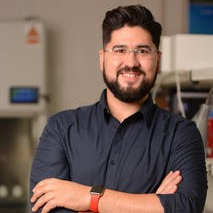Materials and Nanomaterials for Environmental and Bio-Medical Applications
A special issue of Materials (ISSN 1996-1944).
Deadline for manuscript submissions: closed (31 March 2016) | Viewed by 56639
Special Issue Editors
Interests: antibiotic resistance; MALDI-TOF mass spectrometry; analytical proteomics; biomarker discovery; analytical chemistry; biochemistry
Special Issues, Collections and Topics in MDPI journals
Interests: metallic nanoparticles; nanoproteomics; imaging; silica nanoparticles; catalysis
Special Issues, Collections and Topics in MDPI journals
2. Proteomass Scientific Society, Rua dos Inventores, Madan Park, Campus of Caparica, Portugal
Interests: quantum dots, nanoparticles; fluorescence; peptides, protein scavengers
Interests: nanoproteomics; biomarker discovery; personalised medicine; mass spectrometry
Special Issues, Collections and Topics in MDPI journals
Special Issue Information
Dear Colleagues,
We are proud to announce this Special Issue, “Materials and Nanomaterials for Environmental and Bio-medical applications”, in Materials (MDPI Editorial; IF: 2.651) devoted to The 2nd International Symposium on Nanoparticles, Nanomaterials and Applications (2nd ISN2A).
The conference will be held in Costa de Caparica, Portugal, from 18–21 January, 2016. This Special Issue will select excellent papers from the oral (plenary, keynotes, and regular talks) and posters participations, and covers a very wide range of fields in materials, nanomaterials and environmental and bio-medical applications. We invite investigators to contribute original research articles, as well as review articles, to this Special Issue.
Dr. Carlos Lodeiro
Dr. Jose Luis Capelo
Dr. Elisabete Oliveira
Dr. Hugo M. Santos
Guest Editors
Manuscript Submission Information
Manuscripts should be submitted online at www.mdpi.com by registering and logging in to this website. Once you are registered, click here to go to the submission form. Manuscripts can be submitted until the deadline. All submissions that pass pre-check are peer-reviewed. Accepted papers will be published continuously in the journal (as soon as accepted) and will be listed together on the special issue website. Research articles, review articles as well as short communications are invited. For planned papers, a title and short abstract (about 100 words) can be sent to the Editorial Office for announcement on this website.
Submitted manuscripts should not have been published previously, nor be under consideration for publication elsewhere (except conference proceedings papers). All manuscripts are thoroughly refereed through a single-blind peer-review process. A guide for authors and other relevant information for submission of manuscripts is available on the Instructions for Authors page. Materials is an international peer-reviewed open access semimonthly journal published by MDPI.
Please visit the Instructions for Authors page before submitting a manuscript. The Article Processing Charge (APC) for publication in this open access journal is 2600 CHF (Swiss Francs). Submitted papers should be well formatted and use good English. Authors may use MDPI's English editing service prior to publication or during author revisions.
Keywords
Nanoparticles/Nanomaterials in
- bio-medicine
- theranostics
- drug-delivery
- biomarker discovery
- imaging
- scavengers
- pre-concentration systems
- environmental remediation
- pollutant toxic molecules
- ions and cation detection
- water








